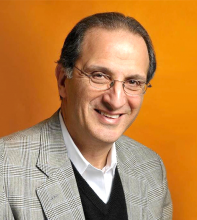You are here
Hebron and Jerusalem: The impact of loss of control
Jan 23,2023 - Last updated at Jan 23,2023
The struggle over the future of Jerusalem is not only about religion, historical claims to holy sites or who gets to pray where and when. It’s also about power, Israel’s continuing demonstrations of power, while Palestinians attempt to salvage some shred of control over their lives.
This struggle can be viewed through many lenses, but nowhere is it more clearly visible than in the tale of two Palestinian cities, East Jerusalem and Hebron, and the connections that bind their fate.
In 1994, after an extremist Israeli settler, Baruch Goldstein, massacred 29 Palestinian worshipers in Hebron’s Al Ibrahimi Mosque, the Israelis imposed several repressive measures that particularly impacted Hebron and Jerusalem. The Israelis laimed the measures were preemptive against Palestinian retaliation for the massacre. An Israeli committed the crime, but the Palestinians paid the price.
Palestinians living close to the few hundred Israeli settlers illegally occupying buildings on Hebron’s Shuhada Street were evicted from their homes. The Israeli military deployed over 1,000 well-armed soldiers and closed off major streets effectively shutting down the souq.
Where thousands of Hebronites once strolled and shopped, now just empty streets and closed Arab shops covered with graffiti reading "Death to the Arabs and “Goldstein is our hero”.
This placed stress and hardship on Hebron a well as disruption to the economic well-being of the Palestinians of neighboring towns and villages. To protect the settlers of nearby Kiryat Arba, the Israeli military established numerous checkpoints and closed side roads. Navigation of the checkpoints became absurd: Arabs driving from nearby villages were forced to park outside one barrier and then walk to the next, 50-meters away, to secure a taxi into Hebron.
Settler rioting, empty Arab shops, police beatings of Palestinians, the closure of the old city and destruction of its economy, daily harassment and pressure, this is daily life in Hebron.
Meanwhile, at the scene of the massacre, the Al Ibrahimi Mosque, Israelis took complete control, physically divided it, unequally into Jewish and Muslim sections. Jews have relatively free access to the building, while Palestinians are forced to wait in humiliating lines and pass through numerous Israeli-controlled checkpoints. On dates of religious importance to Judaism, Israelis routinely close the mosque and its surroundings to Palestinians. Recently, Israel announced plans to seize land around the mosque to build an elevator to provide access for Jewish worshippers.
The fate of Jerusalem and Hebron are connected for two reasons. First, as part of the protective measures taken post-Goldstein, Israel completely cut off East Jerusalem from the rest of the West Bank, with profound economic, social, cultural, political, and even psychological consequences for the Palestinian population of East Jerusalem.
What Israel calls East Jerusalem actually encompasses a large swath of the West Bank including 28 Palestinian villages, a metropolitan area that’s the regional hub where Palestinians shopped, worked, went to the theater, got medical attention and social services. It was the center, and now it was closed.
The absence of jobs and opportunities for the young Palestinians in Jerusalem has produced cynicism and despair. The closure cut the heart of Palestine away from the rest of its body.
As in Hebron, Palestinians in Jerusalem lost control over their lives and futures, and their hope. Witnessing increased settlement construction, land confiscations, and home demolitions as part of Israel’s effort to Judaise the city, that loss of hope has turned to resentment and resistance.
The one place, the only place, where Palestinians feel any semblance of control is at the Haram Al Sharif and the Al Aqsa Mosque. And this is the second reason why the fate of the two cities is linked.
Seeing the increased numbers of heavily guarded Israelis invading the Haram area, acts of incitement that accompany these “visits”, and the declared intent of Israeli extremists to seize control of the area, Palestinians feel profoundly threatened. Their reaction is not as Minister Itamar Ben-Gvir, a senior member of the current Israeli government, claims born of racism or antisemitism. It’s fear that what happened to the al Ibrahimi Mosque will happen at al Aqsa. This they cannot abide. A religious issue to be sure, but, at its core, it is about their need to protect the only control they have left.
The writer is president of the Washington-based Arab American Institute














